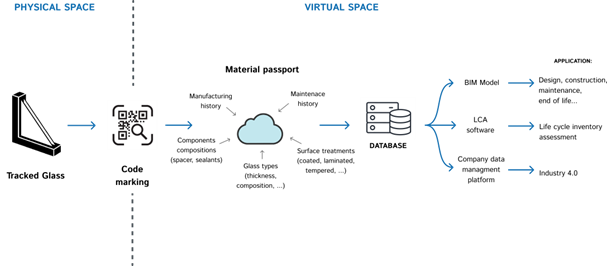Traceability
Paving the Path to a Sustainable Life Cycle of Architectural Flat Glass
DOI:
https://doi.org/10.47982/cgc.9.553
Abstract
Achieving a circular business model for recovering building materials needs multi-level actions within the construction chain and strengthen the stakeholder engagement. One actual trade back in the reclamation of building materials is the lack of comprehensive data and information regarding their history and features. One way to deal with this problem could be the use of a material passport, which can be easily integrated in the building information model (BIM). This research explores strategies to close the life cycle of building materials, emphasizing traceability throughout their entire lifespan. The focus is on post-consumer glass, investigating the benefits of a glass panel code marking and its role in transitioning from an open to a closed material loop. By analysing recovery scenarios of post-consumer glass supported by a traceability system, this research outlines a framework for data collection and storage integrated within digital construction models. This study assesses the potential impact of code marking on post-consumer glass, emphasizing real-world integration possibilities. Insights gained enlightened opportunities for stakeholders involved in the glass recovery and remanufacturing process. The findings underscore the transformative potential of traceability in achieving a circular economy within the construction industry.
Published
Issue
Section
Circularity & Sustainable Solutions
License
Copyright (c) 2024 Angelica Rota, Marco Zaccaria, Francesco Fiorito

This work is licensed under a Creative Commons Attribution 4.0 International License.



